Building a deadlift platform for your home gym is a game-changer for any serious lifter. Not only does it provide a designated spot for one of the most foundational strength-building exercises, but it also helps in reducing noise, protecting your equipment, and preserving your floors. This blog will guide you through the steps to construct a sturdy and reliable deadlift platform, using affordable materials and straightforward techniques.
This is a review of our experience creating our own deadlift platform in our basement. We are both competitive powerlifters and consistently deadlift 315 to 500 pounds. However, most of the training in this gym stayed under the 450 lb weight when constructing this platform. This is meant to be an educational and entertaining guide, not advice. We are not responsible for any injuries or issues you may encounter when constructing your platform should you choose to follow similar steps.
Why Use a Weightlifting Platform in Your Home Gym?
The main reason to use a weightlifting platform is to protect your floors and your plates when performing deadlifts or weightlifting movements. No one wants their new PR ruined by cracking a concrete slab or snapping their weight plate in half. While floors usually break first, there is a risk of plates breaking during lifting (usually old cast plates)
Using a weightlifting platform allows for a softer impact of the weight on the floor as well as spreading the weight of the barbell over a larger flooring area. Both these will help protect your floor and plates, keeping you lifting without any conversations with the landlord.
Other reasons to use a weightlifting platform include, reduced sound when compared to no platform, visual cues for foot placement, band peg opportunities, higher friction flooring area to prevent slipping.
Why our Deadlift Platform is Designed this Way
You might have seen other designs and noticed that ours does not include a center wood section and has multiple extra cuts in the mats. This is because of the purpose this platform was meant to serve. This was a dedicated deadlift only platform, no weightlifting, as well as it was meant to secure a power rack on top. We needed this platform to be large enough to use with a rack, bench and have dedicated space outside the rack for deadlifts. This lead to the design choices of having no seam down the center of the platform. This platform design maximizes the functionality for use in a home gym doing everything but weightlifting.
How to Maintain a Deadlift Platform
Maintenance is super simple and is essentially the same as any gym flooring. Sweep up any loose chalk or dirty and mop horse stall mat occasionally. There is no need to treat the matts or wood in any capacity, they will be fine.
Deadlift Platform vs Weightlifting Platform
You maybe confused having heard people talk about deadlift platforms and weightlifting platforms interchangeably. While they are similar, there are some noticeable differences. A deadlift platform is used for deadlifts and have a smaller footprint while offering the ability to use bands to create nonlinear loading of a lift. While a weightlifting platform is larger, usually containing a wooden strip section in the center of the platform.
You can easily deadlift on a weightlifting platform but you cannot and should not be weightlifting on a deadlift platform.
Things to keep in mind: a deadlift platform has band pegs, although there are ways to get around that, check out our blog on how to use bands without band pegs. The main difference you will care about between a deadlift platform and weightlifting platform is foot print. As for the wood section, both platforms can be made with or without a center wood section, it is personal preference to which you prefer.

Materials used in our deadlift platform
- Horse stall mats
- OSB boards
- Screws ¼”-20
- Sex bolts- double check but I am pretty sure that’s what they are called
- ¼”-20 wahsers
Tools needed
- Utility knife / box cutter
- Electric drill
- ¼” clearance drill bit
- Strait edge
- Large pvc pipe
- Optional lag bolt and nut for rack mounting
- A good attitude
- A couple of beers… maybe

Deadlift Platform Design
While it may seem scary, it is quite easy to build a deadlift platform with little to no tools.
- Lay out cuts on one horse stall mat. Mark cut lines with pencil using a strait edge. Ensure lines are correct, remember to measure twice and cut once.
- Cut mat. This can be most easily accomplished by using the strait edge to make long shallow cuts. Once the cut has begun place the cut edge on the pvc pipe to open up the cut. This allows you to continue to cut without the mat getting in the way of the knife
- Lay mats on osb boards and test assemble.
- Mark out bolt locations and drill through mat completely while stopping after the drill bit reaches the board. Repeat on all hole locations
- Optional: repeat process for rack mounting locations
- Remove mats and drill through all bolt locations
- Optional: Drill holes for rack mounting locations.
- Push sex bolts into back side of osb boards
- Assemble mats on boards placing and tightening the bolts to secure mats on boards
- Optional: place rack on platform and tighten nuts to secure rack in place
- Get strong as fu—fudge

